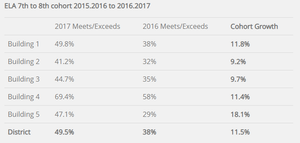Today an educator may equate the word, “assessment” to “test,” and as such, see it as an isolated event that takes place periodically: at the end of the week in the form of a quiz, at the end of a unit of study as a culminating measure of achievement, at the end of a marking period to help determine an overall student grade—or annually as the high-anxiety-producing standardized achievement test.
But “assessment” is not just another word for “test” or “exam”, two terms which indicate a summative evaluation. Formative assessment evaluates a student’s current understanding or ability before, during, and after instruction. Yet that’s only part of it. The assessor and the assessed then need to do something with the results if any real benefit to student learning is to be gained.
Formative Assessment’s Chief Purpose—To Inform and Adjust Instruction and Learning
Formative assessment’s chief purpose and function for teachers is to inform instructional decisions and to make instructional adjustments accordingly. Formative assessment’s true purpose and function for students should be to show them where they need to adjust their learning strategies in order to achieve the stated learning targets.
In my previous post, “Formative Assessment Can Flourish IF…” I wrote that formative assessment can indeed still flourish in today’s schools, but only if and when certain key factors are in place. In this post, I’ll share with you impressive evidence to support that position.
Success Factors In Valley View School District
Valley View School District in Illinois is reaping exciting results through the continued implementation of formative assessment as an integrated standards-instruction-assessment-and data analysis system founded on clarity.
Karen Flories, Valley View’s Executive Director for Educational Services, Grades 6-12, shared with me her district’s deep implementation of the Common Formative Assessment 2.0 process achieved through their ongoing partnership with my colleague, Dave Nagel:
“One of Valley View’s goals is to ensure we are developing what John Hattie refers to as “assessment-capable learners” — students who can take ownership of their learning. In order for that to happen, teacher clarity must be present so everyone involved in the learning process has a clear understanding of what success looks like.
“Our Professional Learning Communities (PLCs) have become equipped with new ways to look at student learning that give them instructional insights they’ve never had before. For example, teams are collectively looking at a standard and thinking about appropriate learning progressions and quick progress checks, and working to develop a distractor analysis so ‘wrong’ answers allow for accurate inference making just as effectively as right ones do.
“CFA 2.0 has supported our teachers in becoming better consumers of what quality assessment looks like, and this has allowed them to be more strategic and responsive when designing or selecting learning tasks for their students.
“Teachers are looking at assessment as feedback on their impact and not for the mere notion of just assigning a ‘grade’ to a student.
“One of the most important variables in our success is that leaders understand and support teachers in the process. We have invested a large amount of time developing our leaders throughout the year, even holding ‘seats’ in our CFA 2.0 cohorts for a select few, and that has played a large role in supporting the implementation of the work. Ensuring that leaders are learners in the process just as much as the teachers are has been crucial in our journey.”
Summative Gains Reflective of Continuous Focus on Formative Assessments
In addition to these key factors that Valley View has consistently focused on to achieve internal formative assessment results, the outcomes of their students as measured by external exam data is, in Karen’s words, “most celebratory.”
Below is a set of tables and related link showing Valley View’s cohort growth between and among their five middle school buildings in English Language Arts, as measured by PARCC (the annual Illinois State Test). There are similar trends in math as well—cohort growth just isn’t as high.
https://docs.google.com/document/d/1lwyuzNTKGDuMZvbf4XWFkpde-GHzF5lB6Rm-q763Em8/edit?usp=sharing
Karen concluded, “The reason I share this data, and I think it’s a powerful testament to our CFA 2.0 development, is because, for the most part, we are universally seeing and sustaining growth in all five of our middle school buildings at all three grade levels (6-8), and that doesn’t happen without focus and purpose.”
For more information about Valley View’s “flourishing” student achievement gains and singular focus, you are encouraged to contact Karen at karenflories@gmail.com and/or Dave Nagel at dave.nagel@corwinlearning.net. Especially important is how they are supporting building leaders in developing a deep understanding of the CFA 2.0 process to effectively lead the work in their own schools.



